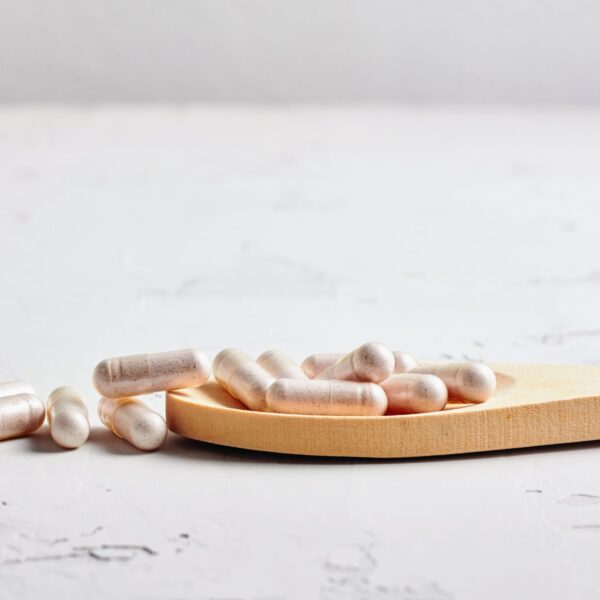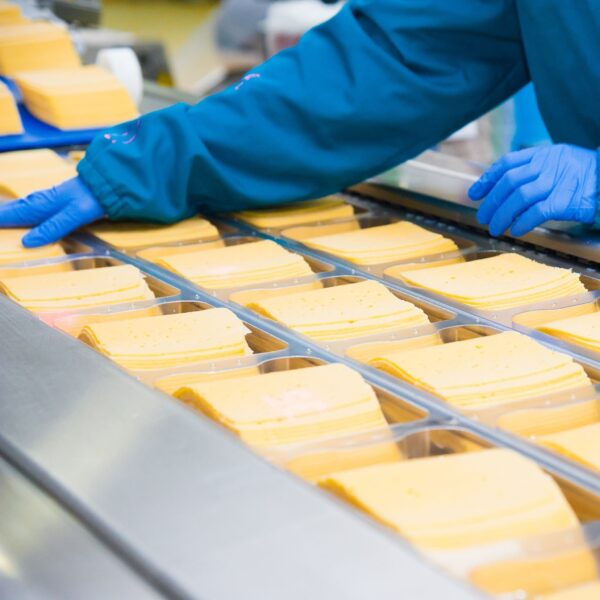Rosemary extract is derived from the leaves of the rosemary plant, scientifically known as Rosmarinus officinalis. This herb has been used for centuries in traditional medicine for its numerous health benefits. Its anti-inflammatory, anti-tumor, anti-cancer, cardioprotective, and hepatoprotective properties have also attracted the attention of researchers. The extract is rich in antioxidants and other beneficial compounds.
Rosemary extract is used in the food industry for preservation, color protection, oil stabilization, and meat flavoring stabilization. Rosemary extract is safe, efficient, and heat-resistant.
What is Rosemary Extract?
The antioxidant activity of rosemary extracts depends on their phenolic composition. Rosemary contains carnosic acid, rosmarinic acid, and carnosol. Typical content ranges are as follows:
- Rosmarinic acid: 0.27-2.49%
- Carnosic acid: 0.01-1.77%
- Carnosol: 0.17-0.94%
The levels of these polyphenolic compounds can decrease rapidly with age due to their dilution during leaf growth.
How is Rosemary Extract Produced?
Manufacturers produce rosemary extract using organic solvents like acetone, ethanol, and hexane-ethanol. Aqueous rosemary extracts are also available; however, their phenolic compound composition differs from organic solvent extracts. Supercritical fluid is also used for the extraction of actives from rosemary. The organic solvent method is the most commonly used method of extraction. Various pre-treatments or extraction conditions can be employed, including ultrasonic-assisted extraction, microwave-assisted extraction, stirring extraction, and heat reflux.
Common factors that affect the active component profile of the extract include solvent used, material-liquid ratio, extraction time, extraction temperature, and drying temperature. The solvent’s polarity, solvency, and boiling point also have a major impact.
For example, one method involves drying rosemary leaves at 45°C until the moisture content reaches 12%, where the leaves are extracted with ethanol using the maceration method. The filtered extract is dried under a vacuum. Post extraction, filtrate can be subjected to decolorization and deodorization if necessary.
It’s important to note that rosemary extract differs from rosemary essential oil, which employs steam distillation or hydro-distillation techniques.
Use of Rosemary Extract in Food and Nutrition
Overall, rosemary extract’s antioxidant, antimicrobial, and anti-inflammatory properties make it a valuable ingredient in food. It can help to preserve the quality and shelf life of food products. Rosemary extract can be a valuable addition to oil due to its antioxidant, antimicrobial, flavor-enhancing, and nutritional properties. It can help improve oil’s shelf life, safety, taste, and health benefits.
Rosemary extract is also commonly used as a flavoring agent in various food products. It can be added to marinades, dressings, sauces, and rubs to enhance the taste and aroma of dishes. It pairs well with meats, poultry, fish, and vegetables, adding a savory and herbal note to the flavor profile.
Applications in Food and Nutrition
| Function | Applications |
| Antioxidant | Rosemary extract is commonly used as an antioxidant in food due to its ability to prevent or slow the oxidation of fats and oils. |
| Shelf-Life Enhancer | By incorporating rosemary extract into food products, manufacturers can help prevent or slow down the growth of microorganisms, thereby extending the shelf life of the products. This can be particularly beneficial for perishable foods, such as meat, poultry, fish, and dairy products, which are more susceptible to microbial spoilage. |
| Flavoring Agent | Rosemary extract is a natural ingredient that is commonly used in food for its flavor-enhancing properties. It has a distinct, aromatic flavor that is often described as piney and slightly minty. The extract is derived from the leaves of the rosemary plant, which contains essential oils and other compounds that contribute to its flavor. |
Properties of Rosemary Extract
| Physical Form | Liquid, powder |
| Storage Temperature & Conditions | Store in air and waterproof glass or plastic resin containers at ambient temperature. Ideally stored at 2-8°C. |
| Appearance | Colorless to yellow to brown liquid |
| pH | 4.5-5.5 |
| Specific Gravity at 20˚C | 0.8940-0.9240 |
| Solubility | Oil- and water-soluble extracts can be obtained separately |
| Claims (*Product Specific) | Natural*, Halal*, Kosher*, Organic*, GMO-free, Plant-based |
Typical Formulations
Yogurt Sauce
Here is an example of a yogurt sauce formulation table with rosemary extract, along with the % composition of ingredients:
| Ingredient | % Composition |
| Greek yogurt | 80.39 |
| Honey | 6.43 |
| Sunflower oil | 9.65 |
| Dijon mustard | 3.22 |
| Salt | 0.32 |
| Inulin | 5.00 |
| Rosemary extract (water) | 0.015 |
| Rosemary extract (oil) | 0.015 |
This formulation uses rosemary extract as a natural antioxidant and antimicrobial properties.
Source: NCBI
Herbal Beverage
Here is an example of an herbal beverage formulation table with rosemary extract, along with the composition of ingredients:
| Ingredient | Composition (g/100 ml) |
| Sucrose | 12 |
| Citric acid | 0.125 |
| Rosemary extract | 1 |
| Sodium benzoate | 0.014 |
| Tricalcium phosphate | 0.1 |
This formulation uses rosemary extract as a natural antioxidant and antimicrobial properties.
Source: Google Patents
Rosemary Extract Formulation Considerations
| Physical Forms | Liquid |
| Stability | Rosemary extract shows the best antioxidant effect below 130°C. |
| Sensory Attributes | Aromatic and pungent, with a distinctive pine-woody aroma and a fresh, bittersweet flavor |
| Dosage | 0.01-0.5 or more, depending on the application and intended effect |
Lipid Oxidation & Rosemary Extract
When exposed to oxygen, light, and heat, oils can undergo oxidation, forming free radicals and breaking the oil’s chemical structure. Lipid oxidation typically involves three stages: initiation, propagation, and termination.
During the initiation stage, free radicals are formed, which are highly reactive and can initiate a chain reaction of lipid oxidation until it is terminated. This oxidation process can result in rancidity, off-flavors, and a decrease in the nutritional value of the oil. Rosemary extract contains natural antioxidants which can effectively scavenge free radicals and inhibit lipid oxidation. These antioxidants can donate hydrogen atoms or electrons to the free radicals, neutralizing their reactivity and preventing further oxidation of lipids. Rosemary extract also contains caffeic acid derivatives. These compounds react with present metal ions, so chelates are formed; they consequently react with peroxide radicals and stabilize these free radicals.
Antioxidant Principle Components
Polyphenols and flavonoids in rosemary extract exert antioxidant activity. Carnosic acid and carnosol are two important active components found in plants belonging to the Lamiaceae family. Both phenolic diterpenes exhibit attractive biological properties, namely antioxidant, anticancer, anti-inflammatory, and neuroprotective activities.
| Carnosic Acid | Carnosic acid is a phenolic diterpene carrying two phenolic hydroxyl groups and a carboxyl group. The presence of a catechol group in the aromatic ring (C11-C12) of the rosemary phenolic diterpene skeleton is probably the most important structural element in antioxidant activity. Carnosic acid has a high reactivity toward reactive oxygen species (ROS) and is easily oxidizable. It is likely that the antioxidant activity of carnosic acid relies on the chemical quenching of ROS Diterpene levels in rosemary plants display seasonal changes, with a tendency for carnosic acid losses in response to environmental stress conditions. The antioxidant activity of carnosic acid has an antioxidative capacity several times that of BHT and BHA but less than TBHQ. |
| Carnosol | Carnosol can interact directly with the lipid peroxidation mechanism and can be degraded by reactions with some lipid oxidation-derived products. |
| Rosmarinic Acid | In rosmarinic acid, two catechol structures conjugated with a carboxylic acid group increase the antioxidant activity. Adding polyphenols reduces the level of oxidation compounds during the autoxidation of the polyunsaturated fatty acid. |
Antimicrobial Activity
Rosemary plants are rich sources of phenolic compounds with high antimicrobial activity against both Gram-positive and Gram-negative bacteria. Rosemary leaf extract can be used as a potential antimicrobial of natural origin in foods. The monoterpenes and phenols in rosemary possess noticeable antimicrobial, antifungal, and antiviral activity.
Studies have shown that rosemary extract can effectively inhibit the growth of various pathogenic bacteria, including Staphylococcus aureus, Escherichia coli, Salmonella enterica, and Pseudomonas aeruginosa. It has been found to exert its antimicrobial effects by inhibiting essential enzyme activities and interfering with bacterial DNA replication.
Aqueous or Organic Solvent Extract
The polyphenolic components in rosemary can be extracted using aqueous or solvent extraction. In lipid systems, extracts with higher phenolic diterpene content are more effective, while in aqueous systems, rosmarinic acid exhibits the highest antioxidant activity.
The varying profiles of polyphenolic compounds obtained via aqueous and solvent extraction are given in the table below.
| Polyphenolic compounds | Solvent Extract | Aqueous Extract |
| Rosmarinic acid | 0.61 ± 0.01 | 8.46 ± 0.06 |
| Isoscutellarein 7-O-glucoside | 0.01 ± 0.00 | 4.46 ± 0.04 |
| Genkwanin | 1.50 ± 0.02 | 0.13 ± 0.01 |
| Carnosol | 13.14 ± 0.09 | 0.07 ± 0.00 |
| Carnosic acid | 28.30 ± 0.11 | 0.15 ± 0.01 |
| 12-methylcarnosic acid | 0.59 ± 0.01 | 0.01 ± 0.00 |
Source: ACS
Comparison
- Aqueous extract has a higher concentration of rosmarinic acid and flavone isoscutellarein 7-O-glucoside. The high antioxidant activity of aqueous extract can be attributed to them.
- On the other hand, the higher concentration of phenolic diterpenes in organic solvent extracts is responsible for the high antioxidant activity and prolongation of linoleic acid stability in an ethanol-water system.
- Rosemary extracts are, therefore, excellent antioxidants in both aqueous and lipid systems.
Rosemary Oil vs. Rosemary Extract
Rosemary essential oil is a colorless or pale‐yellow volatile liquid extracted from the branches and leaves with a characteristic odor. It consists mainly of monoterpenes such as 1,8‐cineole, camphor, and α‐pinene. It is considered a natural antioxidant and has been reported as an inhibitor of lipid oxidation in meat products. Essential oil fractions can be used as natural antioxidants for vegetable oils, increasing their shelf-life, improving their stability, and preventing loss of their sensory and nutritional qualities.
The antioxidant activity of essential oil is majorly due to oxygenated monoterpenes, specifically α-terpineol and cis-sabinene hydrate. In a study, volatile constituents of rosemary aroma were mainly represented by monoterpenes, and their oxygenated derivatives were detected at 3% and 8.4%, respectively. Another study reports on the volatile components of rosemary obtained using hydrodistillation, with the major volatiles obtained from rosemary listed below.
| Compound Name | % Composition |
| Bornyl acetate | 26.6 |
| Eucalyptol | 17.38 |
| Camphor | 10.42 |
| Borneol | 9.78 |
| Beta-Caryophyllene | 7.8 |
| Lupeol | 7.18 |
| Camphene | 4.1 |
| Alpha-Pinene | 3.85 |
| Alpha-Terpineol | 3.77 |
| Beta-Pinene | 3.41 |
| Caryophyllene oxide | 1.19 |
| Terpinen-4-ol | 1.17 |
Effect on Properties of Food Products
- Shelf Stability: Rosemary extract contains natural antioxidants that can help to inhibit or slow down the oxidation process in lipids. In a study, adding rosemary extract to a sunflower and soybean oil mixture reduced the peroxide value by 38% after 30 hours of heating. This oil resists oxidation and conserves more unsaturated fatty acids after 30 hours of heating. The evolution of saturated fatty acid composition is estimated at 5.5% and 25% in the oil with and without extract, respectively, at the end of the heating treatment. In another study, adding 0.02% rosemary extract and heat treatment extended the shelf life of chicken meat while maintaining acceptable sensory attributes.
- Sensory Properties: Oxidation leads to a rancid taste and unacceptable oil taste notes. When rosemary extract is added to oil, it improves the stability of the oil and preserves the sensory qualities for a longer period. This applies to oils stored at ambient conditions. A study reports a periodic reduction of bitter notes in flaxseed oil during storage due to the addition of rosemary extract. It applies to frying oils as well. In another study, fried potato prepared in oil with rosemary extract had the best crispiness and taste until the fifteenth frying.
- Synergistic Effects: Rosemary extract has been found to have synergistic effects with other antioxidants, such as vitamin E, for preserving the quality and stability of oils. This combination of antioxidants can provide more effective protection against oxidation and enhance the overall shelf life of the oil.
Safety and Regulatory Considerations
| FDA Information | Rosemary extract is “generally regarded as safe” as per the US FDA under essential oils, oleoresins, and natural extractives. |
| EU Information | Extracts of rosemary (E 392) is an authorized food additive in the EU. It should be prepared by extraction of the leaves of Rosmarinus officinalis using a food-approved solvent system. Extracts may then be deodorized and decolorized. Extracts may be standardized. |
Health Effects of Rosemary Extract
Rosemary has significant antimicrobial, anti-inflammatory, antioxidant, anti-apoptotic, anti-tumorigenic, antinociceptive, and neuroprotective properties. Furthermore, it shows important clinical effects on mood, learning, memory, pain, anxiety, and sleep.
Safety & Toxicity of Rosemary Extract
Rosemary extract is generally regarded as safe, although only when consumed in moderate quantities.
It appears to have low acute toxicity, and the oral lethal doses (LD50) for male and female rats are greater than 2,000 mg/kg of body weight.
Identification Numbers
| CAS Number | 84604-14-8 |
| EC Number | 283-291-9 |
| Chemical Name | Rosemary extract (Rosmarinus officinalis) |
| ELINCS Number | 283-291-9 |
| INS No. (Food Additive) | INS 392 |
| E Number (Food Additive) | E 392 |
| FEMA Number | 2992 |
Acceptable Limits or Maximum Usage
The maximum usage level of rosemary extract in the food industry per the EU is as follows:
| Food Category Name | MPL |
| Dehydrated milk as defined by Directive 2001/114/EC | 200 |
| Dehydrated milk as defined by Directive 2001/114/EC | 30 |
| Fats and oils essentially free from water (excluding anhydrous milkfat) | 30 |
| Fats and oils essentially free from water (excluding anhydrous milkfat | 50 |
| Other fat and oil emulsions, including spreads as defined by Council Regulation (EC) No 1234/2007 and liquid emulsions | 100 |
| Vegetable oil pan spray | 50 |
| Fruit and vegetable preparations, excluding compote | 200 |
| Nut butters and nut spreads | 200 |
| Processed potato products | 200 |
| Chewing gum | 200 |
| Decorations, coatings and fillings, except fruit-based fillings covered by category 4.2.4 | 100 |
| Fillings of stuffed pasta (ravioli and similar) | 250 |
| Fine bakery wares | 200 |
| Non-heat-treated meat products | 100 |
| Non-heat-treated meat products | 15 |
| Non-heat-treated meat products | 150 |
| Non-heat-treated meat products | 150 |
| Heat-treated meat products | 15 |
| Heat-treated meat products | 150 |
| Heat-treated meat products | 100 |
| Heat-treated meat products | 150 |
| Processed fish and fishery products, including mollusks and crustaceans | 15 |
| Processed fish and fishery products, including molluscs and crustaceans | 150 |
| Processed eggs and egg products | 200 |
| Seasonings and condiments | 200 |
| Mustard | 100 |
| Soups and broths | 50 |
| Sauces | 100 |
| Potto-, cereal-, flour- or starch-based snacks | 50 |
| Processed nuts | 200 |
| Food supplements supplied in solid form, including capsules and tablets and similar forms, excluding chewable forms | 400 |
| Food supplements supplied in liquid form | 400 |
| Food supplements supplied in syrup-type or chewable form | 400 |
Fun Facts About Rosemary Extract
- Rosemary extract contains antioxidants, particularly rosmarinic acid, carnosic acid, and carnosol. These compounds help protect cells from damage caused by free radicals.
- Historically, rosemary was associated with memory and remembrance. It was used in weddings and funerals, and students in ancient Greece wore rosemary garlands during exams.
- Due to its antioxidant and antimicrobial properties, rosemary extract is often used as a natural preservative in food products, extending its shelf life while maintaining freshness.
- Rosemary extract has been explored for its potential as a natural insect repellent. It may help deter certain insects, and formulations with rosemary oil are sometimes used in natural insect-repellent products.
- Rosemary extract is often included in hair care products for its potential benefits for the scalp. It is believed to stimulate hair growth and improve overall hair health.
Additional Resources
- ISNFF Journal of Food Bioactives – Article on Frying Oils and Antioxidants
- AOCS – Enhancing Oxidative Stability and Shelf Life of Frying Oils with Antioxidants
- ScienceDirect – Article on Oxidative Stability of Frying Oils
- PubMed Central – Study on Antioxidants in Frying Oils
- Current Research in Environmental & Applied Mycology – Research on Edible Oils







